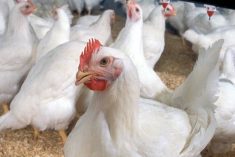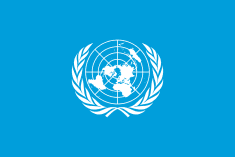The Canadian Food Inspection Agency has concluded it’s too risky to import bees from the United States because “there is still a high probability of introducing diseases and pests into Canada.”
The CFIA’s risk assessment, released in late October, is a disappointment to beekeepers in Manitoba and Alberta who want to import bee packages from the U.S.
Bryan Ash, a beekeeper from Gilbert Plains, Man., said there is a 30-day comment period before the CFIA makes a final recommendation to the federal government.
Read Also

CBOT Weekly: China, shutdown guiding the market
The United States grain and oilseed markets are currently dominated by two factors, said Ryan Ettner, broker with Allendale Inc. in McHenry, Ill. Ettner said those are the absence of a trade deal with China and the ongoing United States government shutdown.
“With risk assessments it’s pretty hard to know which way this will swing. We’re hoping, but I have no idea what our chances are.”
Manitoba beekeepers began lobbying to import bees from the U.S. this spring after they suffered exceptionally high rates of winter losses. More than 46 percent of bee colonies failed to make it through the winter.
Opening the border to U.S. bees would allow apiarists to quickly rebuild colonies and maintain honey production, Ash said.
“When our bees die off, it takes two to three or sometimes five years, to build back up. Every time you’re building up you’re losing honey production.”
Canadian beekeepers can import bee packages — a queen and two or three pounds of worker bees — from Chile, Australia and New Zealand, but the cost is significantly higher than the U.S.
In light of the record losses, the Manitoba Beekeepers’ Association asked the CFIA to review the ban on imports of U.S. bee packages. The CFIA initially prohibited the import of U.S. bee packages in 1987 because of concerns over varroa mites. Since 2003, the agency has permitted the import of U.S. queens but not bee packages.
In its recent risk assessment, the CFIA made it clear the ban on U.S. bee packages should remain in place because of four identified risks to Canadian bee colonies:
* Africanized honeybees.
* Antibiotic resistant American foulbrood, a disease that affects bee larvae.
* Small hive beetle.
* Varroa mites resistant to amitraz, a miticide.
“Conclusions of the current risk assessment are similar to the previous scientific evaluation conducted in 2003,” the CFIA noted in its assessment.
“As such, the risk assessment provides scientific support for the import control measures that are currently in place for the importation of honeybees from the U.S. These measures allow honeybee queens to be individually inspected for signs of disease before importation into Canada. Such verification is not possible with honeybee packages.”
Manitoba Beekeepers Association president Allan Campbell said the hazards identified in the CFIA report already exist in Canada.
“The highest risk in the assessment, which was still a moderate risk, not a high risk, was importing varroa mites that have resistance to amitraz, our main control (for mites),” he said.
“As long as we’re using Apivar (brand name for amitraz) strips in our hives, which we are, we’re building resistance.”
The other moderate risk was resistance to oxytetracylcine, an antibiotic that protects hive from American foulbrood.
“Again, it’s a drug we’re using so we’re building resistance too,” Campbell said.
Manitoba and Alberta beekeepers support opening the U.S. border, but other associations do not.
“When you get to B.C., Saskatchewan, the Maritimes, Quebec and Ontario, their opinions are different,” Ash said.
“Ontario, their main thing is pollination and they’re scared their pollination contracts will drop in value.”
British Columbia Beekeepers president Wayne Neidig said his association supports the CFIA assessment and the continued ban on U.S. imports.
“There are the risks of bees coming to our country that are immune to (disease control products),” he said.
If miticides and antibiotics are no longer effective, “what would we use?”















